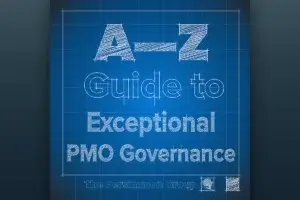Outcomes-Driven Leadership: Put an End to Action Without Progress
Struggling to move the needle on your strategy? It could be the result of a faulty “goals-first” approach.
Our culture pays a lot of attention to goals. SMART Goals, BHAGs, OKR’s, and many other frameworks are dedicated to giving your organization clear, measurable direction.
But by themselves, goals represent only superficial achievement. In other words, it’s possible to “check the boxes” on all your goals, but fail to achieve the desired strategic outcome.
The world is moving too fast for organizations to be constrained by their goals. For example, halfway through executing your strategy, one or more of your goals may become irrelevant. Worse, the time and attention you spend meeting a predefined goal may cause you to miss critical opportunities as a new and uncertain future unfolds.
So what should you do instead?
Build your strategy around outcomes, with goals as an important (but secondary) focus.
Outcomes First: How Does it Work?
First, let’s clarify the difference between outcomes and goals. An outcome is a desired end state. It’s the strategic position or result you want to achieve. Goals, on the other hand, are the tactical, observable, and measurable milestone accomplishments that in theory will move the needle on your desired outcome.
Step One: Identify your key outcomes
Start by creating your top 3-5 outcomes in each critical area of your business. These outcome categories will differ by organization, depending on what is most important to you–but common areas to consider are:
-
- Customers
- Operations
- Financials
- Workforce
- Partners/Suppliers
To illustrate what an outcome for one of these categories might look like, let’s consider a leader who wants to grow annual sales and sets a goal that is intended to help achieve that goal: 100 sales quotes per day. They believe that if the team hits that mark, the revenue will follow. You can see how this plays out over the year. The team submits 100 quotes per day to hit their marks, regardless of their qualification, because their leader measures them on the “100” number. Goal completed.
But an outcomes-focused leader asks, “Are we submitting quotes that best support our desired revenue target? Are we submitting to clients with the highest potential close rate? And, do these customers have the potential for additional growth?”
What if the outcome for the sales team was this instead: “We achieve our monthly sales targets for our most profitable products, with increased month-over-month referrals and repeat business?”
This helps better establish what success would look like for the sales team. This outcome statement defines the end state and answers “why” we want repeat business. In doing so, it changes the conversation from an action-focused “submit 100 quotes” to a result-focused one that asks, “Are we submitting the right quotes?”. “Are we developing long-term relationships?” The sales team still takes action, but the action is now tied to a result that enables multiple tactics to achieve it. It empowers the salesperson to focus on understanding the customer’s needs, regardless of the number of quotes submitted.
Step Two: Establish goals to measure progress towards the end state.
Here is when goals become useful. They establish points along the way to check progress towards the agreed-upon outcome. Think of them as milestones, or “checkpoints,” throughout the year to see how the person is doing. If a goal is met, then we should reflect to see if it helped move towards the end state.
For example, in the above outcome, some of the goals may be:
- 60% of the closings coming from repeat customers (harvesting)
- 40% closing rate
- 45% gross margin in sales
Step Three: Resolve the Initiatives (actions + projects) to achieve the outcomes and goals.
This is where the strategy becomes realized. What initiatives or changes do you need to implement to achieve the goal(s) and outcome (s)? These are the tactical efforts that will progress you towards your vision. Once identified, they will become your “roadmap”–guiding you on the journey towards your strategy. Some initiatives may change–and they will definitely be debated–because they are the living plan that adapts as you proceed.
This step is a key factor in whether the strategic plan is used (and successfully achieved) or just left on the proverbial shelf. By establishing what the end state looks like, the strategy execution shifts into a review of the initiatives’ results. This creates a “living” plan that adapts and adjusts to meet the related goals and outcomes, as the year unfolds and circumstances change. If initiatives are not leading to the expected goal measures or outcomes, they need to be adjusted, stopped, or replaced with new ones.
What Next?
What if you already have a strategic plan in place…but it contains only goals and initiatives? It’s not too late to reframe the path forward. Clarify the desired outcomes, and then use those to do a “gut check” on your current goals and initiatives. Remove any goals or actions that represent low-value, irrelevant, or unnecessary work. Elevate and highlight the initiatives that have the highest direct bearing on your desired outcomes.
When organizations become outcomes-focused, teams and departments can collaborate to consider the best paths to get there. Not only does innovation and solution-focused thinking increase, now goals and initiatives become much more strategic. Within the context of outcomes, potential strategies can get properly scrutinized and considered before being decided upon. When you and your team are working with the end in mind, you are consistently moving the needle–or making the right course corrections, at the right time–to get the needle moving again.









